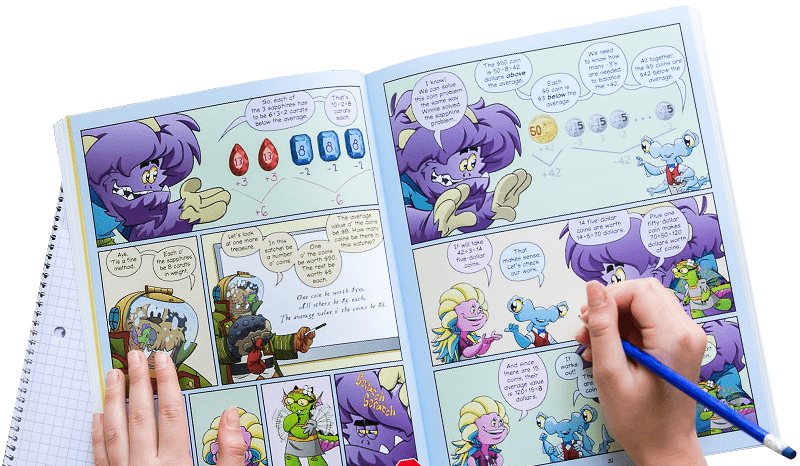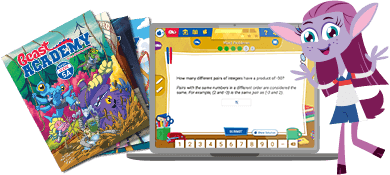Fifteen
Practice addition by trying to take three cards that add to 15 before your opponent can.
Instructions
Pull out Ace through 9 of a single suit from a standard deck of cards, and lay them out between players. (Or, use the numerals 1-9 from your Number Deck.)

Now players take turns choosing 1 card at a time from the cards in the middle. The winner is the first to collect 3 cards that add to 15.

If your first 3 cards don't add to 15, it doesn't mean you've lost. You can still win by choosing another card that, when combined with any two of your cards, adds to 15.
As you play, you'll notice that a big part of the game is trying to block your opponent. Think about what cards they have, and what they still need to get a sum of 15. If you can, take that card before they do!
Don't forget: it's Beast Academy Playground, not Beast Academy Study Hall. Change the rules, be silly, make mistakes, and try again. The Variations and Learning Notes are here for you if you want to dive deeper, but not all of them apply to learners of every age. The most important thing is to have fun.
What do you think of this activity?
We're always looking to improve. Submit your feedback to us below.
- standard deck of cards
- addition
- strategic thinking
- MP1
- MP2
- MP4
- K.OA.A.4
- 1.OA.C.5
- 1.OA.C.6
- 1.OA.D.8
- 2.OA.B.2

Ready to level up?
Keep problem solving with Beast Academy’s full math curriculum for students ages 6–13. Check out our captivating comic book series and immersive online platform.
LEARN MOREBring problem-solving to your classroom
Keep your entire class engaged with a full book and online math curriculum, for students ages 6–13. 98% of teachers say they’re satisfied with Beast Academy.
LEARN MORE



Ready to level up?
Keep problem solving with Beast Academy’s full math curriculum for students ages 6–13. Check out our captivating comic book series and immersive online platform.
LEARN MOREBring problem-solving to your classroom
Keep your entire class engaged with a full book and online math curriculum, for students ages 6–13. 98% of teachers say they’re satisfied with Beast Academy.
LEARN MORE
Sign up to be notified when new videos are released.
















































